Эмоции: великолепная история человечества [заметки]
1
Thomas Dixon, From Passions to Emotions: The Creation of a Secular Psychological Category (Cambridge, UK: Cambridge University Press, 2003).
2
Anna Wierzbicka, Imprisoned in English: The Hazards of English as 4 Default Language (Oxford, UK: Oxford University Press, 2013), 75.
3
Debi Roberson et al., “Colour Categories and Category Acquisition in Himba and English,” in Progress in Colour Studies, vol. 2, Psychological Aspects, ed. Nicola Pitchford and Carole P. Biggam (Amsterdam: John Benjamins, 2006), 159–172.
4
Jonathan Winawer et al., “Russian Blues Reveal Effects of Language on Color Discrimination,” Proceedings of the National Academy of Sciences of the United States of America 104, no. 19 (May 8, 2007): 7780–7785.
5
Два отличных примера: Thomas Dixon, Weeping Britannia: Portrait of a Nation in Tears (Oxford, UK: Oxford University Press, 2015); Joanna Bourke, Fear: A Cultural History (London: Virago Press, 2006).
6
Советую почитать вторую часть: William Reddy’s The Navigation of Feeling: A Framework for the History of Emotions (Cambridge, UK: Cambridge University Press, 2001). Хотя если на то пошло, то почитайте и первую.
7
Отличный пример: Stephanie Downes, Sally Holloway, and Sarah Randles, eds., Feeling Things: Objects and Emotions Through History (Oxford, UK: Oxford University Press, 2018).
8
Richard Firth-Godbehere, “Naming and Understanding the Opposites of Desire: 1 Prehistory of Disgust 1598–1755” (PhD diss., University of London, 2018), qmro.qmul.ac.uk/xmlui/handle/123456789/39749?show=full.
9
См.: Reddy, The Navigation of Feeling. Обязательна к прочтению тем, кто интересуется темой.
10
Arlie Russell Hochschild, The Managed Heart: Commercialization of Human Feeling (Berkeley: University of California Press, 1983), 7.
11
Barbara H. Rosenwein, Emotional Communities in the Early Middle Ages (Ithaca, NY: Cornell University Press, 2007).
12
Plato, “Phaedo.” trans. G. M. A. Grube, Plato: Complete Works, ed. John M. Cooper (Indianapolis: Hackett Publishing, 1997), loc. 1792, Kindle.
13
David Sedley, Plato’s Cratylus, Cambridge Studies in the Dialogues of Plato (Cambridge, UK: Cambridge University Press, 2003), 10.
14
Alfred North Whitehead, Process 4 Reality, ed. David Ray Griffin and Donald W. Sherburne (New York: Free Press, 1978), 39.
15
Множественное число от греч. παθóς. Здесь и далее, если не указано иное, примечания переводчика и редактора.
16
Plato, “Republic,” trans. G. M. A. Grube, rev. C. D. C. Reeve, in Plato: Complete Works, ed. John M. Cooper (Indianapolis: Hackett Publishing, 1997), loc. 26028–27301, Kindle.
17
Здесь и далее цитаты из Библии и Торы даются в русском синодальном переводе.
18
Plato, “Republic,” loc. 27176–27195.
19
Plato, “Republic,” loc. 27239–27264.
20
Xenophon, Memorabilia, trans. Amy L. Bonnette (Ithaca, NY: Cornell University Press, 2014), loc. 514–520, Kindle.
21
Plato, “Phaedo,” loc. 2889.
22
Федон // Платон. Собр. соч. в 4 т. Т. 2 / пер. С. П. Маркиша. М.: Мысль, 1993.
23
Plato, “Phaedo,” loc. 2886.
24
Plato, “Phaedo,” loc. 2878–2897.
25
Plato, “Critias,” trans. D. Clay, in Plate: Complete Works, ed. John M. Cooper (Indianapolis: Hackett Publishing, 1997), loc. 1541, Kindle; Plato, “Phaedo,” loc. 2511.
26
Plato, “Phaedo,” loc. 2890.
27
Emily Wilson, The Death of Socrates (Cambridge, MA: Harvard University Press, 2007), 114.
28
Или в оригинале: «Oh Kriton, das Leben ist eine Krankheit!» См. www.nietzschesource.org/#eKGWB/FW-340.
29
Glenn W. Most, “A Cock for Asclepius,” Classical Quarterly 43, no. 1 (1993); 26–111.
30
Xenophon, Memorabilia, loc. 2859.
31
Plutarch, Plutarch’s Lives, trans. George Long and Aubrey Stewart (London: George Ball and Sons, 1892), 3:302.
32
Хорошие аргументы в пользу этой гипотезы приведены здесь: Bente Killerich, “The Head Posture of Alexander the Great,” Acta ad archaeologiam et artium historiam pertinentia 29 (2017): 12–23.
33
Не забывайте, что историки используют приставку «псевдо» не без оснований. Но даже несмотря на то, что сама история может быть выдумкой, она все еще способна помочь нам во многом понять аристотелевский взгляд на эмоции. Прим. авт.
34
Pseudo-Callisthenes, The Romance of Alexander the Great by Pseudo-Callistbenes, trans. Albert Mugrdich Wolohojian (New York: Columbia University Press, 1969), 57.
35
Пер. Л. Егунова.
36
Aristotle, “On the Soul,” trans. J. A. Smith, in The Complete Works of Aristotle, ed. Jonathan Barnes (Princeton, NJ: Princeton University Press, 1984), 1:413a20.
37
Aristotle, “On the Soul.” 1:434a22–434bl; Aristotle, “Parts of Animals,” trans. W. Ogle, in The Complete Works of Aristotle, 1:687a24–690a10; Aristotle, “Metaphysics,” trans. W. D. Ross, in The Complete Works of Aristotle, 2:1075a16–25.
38
Aristotle, “On the Soul,” 1:424b22–425a13.
39
Aristotle, “On the Soul,” 1:1369b33.
40
Aristotle, “On the Soul,” 1:1370al.
41
Aristotle, “On the Soul,” 2:1378a30, 1380a5.
42
Aristotle, “On the Soul,” 2:1380635, 1382bl.
43
Aristotle, “On the Soul,” 2:1382a21, 1383a15.
44
Aristotle, “On the Soul,” 2:1383616–17.
45
Aristotle, “On the Soul,” 2:1385a15–1385a1.
46
Это интересно, поскольку предполагает, что Аристотель считал следствием пате не только чувства, но и поступки. Прим. авт.
47
Aristotle, “On the Soul,” 2:1385b13, 1386b10.
48
Aristotle, “On the Soul,” 2:1387b20, 1388a30.
49
Pseudo-Callisthenes, The Romance of Alexander the Great by Pseudo-Callistbenes, trans. Albert Mugrdich Wolohojian (New York: Columbia University Press, 1969), 58.
50
Здесь и ниже в цитатах пер. Л. Егунова.
51
Aristotle, “On the Soul,” 2:1379b1–2.
52
Здесь и в следующем абзаце цит. по: Античные риторики / пер. Н. Платоновой. М., 1978.
53
Aristotle, “Rhetoric,” trans. W. Rhys Roberts, in The Complete Works of Aristotle, 1:1367b8.
54
Pseudo-Callisthenes, 59–60.
55
Pseudo-Callisthenes, 59–60.
56
Harry G. Frankfurt, On Bullshit (Princeton, NJ: Princeton University Press, 2005); Harry G. Frankfurt, “Freedom of the Will and the Concept of a Person,” Journal of Philosophy 68, no. 1 (January 14, 1971): 5–20.
57
Timothy Schroeder, Three Faces of Desire (Oxford, UK: Oxford University Press, 2004).
58
Wendy Doniger, The Hindus: An Alternative History, reprint ed. (Oxford, UK: Oxford University Press, 2010), 44.
59
Upinder Singh, A History of Ancient and Early Medieval India: From the Stone Age to the 12th Century (New Delhi: Longman, an imprint of Pearson Education, 2009), 19; K. S. Ramachandran, “Mahabharata: Myth and Reality,” in Delhi: Ancient History, ed. Upinder Singh (Oxford, UK: Berghahn Books, 2006), 85–86.
60
Eknath Easwaran, trans., The Bhagavad Gita (Tomales, CA: Nigiri Press, 2007), 251–265.
61
Daya Krishna, “The Myth of the Purusarthas,” in Theory of Value, Indian Philosophy: A Collection of Readings 5, ed. Roy W. Perrett (Abingdon, UK: Routledge, 2011), 11–24.
62
R. P. Dangle, ed. and trans., The Kautiliya Arthasastra Part 11 (New Delhi, India: Motilal Banarsidass, 1986), 482.
63
Кстати, речь всегда о мужчине. В те времена у женщин не было никакой дхармы, кроме как быть хорошей женой. Прим. авт.
64
Karen Armstrong, Buddha (London: Phoenix, 2000), 74.
65
Для более глубокого погружения в тему обратитесь к Padmasiri de Silva, “Theoretical Perspectives on Emotions in Early Buddhism,” в Emotions in Asian Thought: A Dialogue in Comparative Philosophy, ed. Joel Marks and Roger T. Ames (Albany: State University of New York Press, 1995), 109–122.
66
Эта история приводится в одном из произведений буддийского палийского канона, «Чуласаччака сутта» (The Culasaccaka Sutta) из «Собрания средних наставлений» Будды: A Translation of the Majjhima Nikaya, trans. Bhikkhu Nanamoli and Bhikkhu Bodhi (Kandy, Sri Lanka: Buddhist Translation Society, 1995), 322–331.
67
The Culasaccaka Sutta, 322, 328.
68
The Culasaccaka Sutta, 323.
69
The Culasaccaka Sutta, 328, lirs.ru/lib/sutra/The_Middle_Length_Discourses(Majjhima_Nikaya),Nanamoli,Bodhi,1995.pdf.
70
The Connected Length Discourses of the Buddha: A Translation of the Samyutta Nikäya, trans. Bhikkhu Bodhi and Bhikkhu Ninamoli (Kandy, Sri Lanka: Buddhist Translation Society, 2005), 421.
71
Middle Length Discourses, 121.
72
Рассуждения автора о совпадении созвучных слов «чанда» и «чханда» представляют собой интересную, но не имеющую пока строгого научного обоснования гипотезу. В прозвище Ашоки фигурирует слово cānda — «насилие, жестокость». В то время как одна из разновидностей желания (в буддизме преимущественно трактуемая как желание действовать) носит название chanda. Прим. науч. ред.
73
Ashoka, Major Rock Edict 13, in Romila Thapar, Asoka and the Dedine of the Mattryas (Oxford, UK: Oxford University Press, 1961), 255–256.
74
Ashoka, Minor Pillar Edict I, in Thapar, Asoka and the Dedine of the Mauryas, 259.
75
Romila Thapar, “Asoka and Buddhism as Reflected Asokan Edicts,” in King Asoka and Buddhism: Historical and Literary Studies, ed. Anuradha Seneviratna (Kandy, Sri Lanka: Buddhist Publication Society, 1995), 36.
76
Согласно World Population Review, worldpopulationreview.com/country-rankings/buddhist-countries.
77
Jan M. Bremmer, ed., The Aparyphal Acts of Paul and Theda, Studies on the Apocryphal Acts of the Apostles 2 (Leuven, Belgium: Peters Publishers, 1996), 38.
78
Acts 21:28. Все библейские стихи в книге приводятся по Christian Standard Bible (CSB, христианская стандартная Библия), за исключением случаев, где указано иное (Nashville, TN: B& H Publishing Group, 2020).
79
Здесь и далее цитаты из Библии приведены в русском синодальном переводе. Деян. 21:28.
80
Acts 5:34.
81
Деян. 9:4.
82
Acts 9.
83
О гипотезе эпилептического припадка можно почитать здесь: D. Landsborough, “St Paul and Temporal Lobe Epilepsy,” Journal of Neurology, Neurosurgery, and Poycbiatry 40 (1987): 659–664; о версии с ударом молнии — здесь: John D. Bullock, “Was Saint Paul Struck Blind and Converted by Lightning?” Survey of Opbrbalmology 39, no. 2 (September-October 1994): 151–160.
84
Старенькая, но хорошая: Edward A. Wicher, “Ancient Jewish Views of the Messiah,” Journal of Religion 34, no. 5 (November 1909): 317–325.
85
Leviticus 4:1–5:13.
86
Exodus 34:6–7. Jay P. Green, ed. and trans., The Interlincar Bible: Hebret-Greck-English, 2nd ed. (Lafayette, IN: Sovereign Grace Publishers, 1997).
87
Deuteronomy 5:9–10.
88
Исх. 20:5.
89
Куда более подробно она пишет об этом здесь: Valerie Curtis, Don’t Look, Don’t Touch: The Science Behind Revulsion (Oxford, UK: Oxford University Press, 2013).
90
Jaak Panksepp, “Criteria for Basic Emotions: Is DISGUST a Primary Emotion?” Cognition and Emotion 21, no. 8 (2007): 1819–1828.
91
Shaqats: Leviticus 11:10, 11:13, 11:43; Deuteronomy 7:26. Sheets: Leviticus 1:10–13, 11:20, 11:44, 11:42; Isaiah 66:17; Ezekiel 8:10.
92
Для перекрестного сравнения использовались параллельный английский перевод Библии Вульгаты (Vulgate и KJV, Библия короля Якова) (Kirkland, WA: Latus Publishing, 2011) и подстрочный перевод Библии с вариантами из Вульгаты в скобках. Во избежание путаницы сохранены современные названия книг.
Toebah: Exodus 8:26; Leviticus 18:22, 18:26, 18:29, 20:13; Deuteronomy 7:25, 7:26, 13:14, 13:31, 17:1, 17:4, 18:9, 18:12, 20:18, 22:5, 23:18, 24:4, 25:16, 27:5, 32:16; 1 Kings 14:24; 2 Kings 21:11, 23:23; 2 Chronicles 33:2, 33:35, 36:8, 36:14; Ezra 9:1, 9:11, 9:14; Proverbs 3:32, 11:1, 11:20, 12:22, 15:8, 15:9, 15:26, 16:5, 16:12, 17:15, 20:10, 20:23, 21:27, 24:9, 29:27; Isaiah 1:13, 41:21; Jeremiah 2:7, 6:15, 7:10, 8:12, 16:18, 32:35, 44:2, 44:22; Ezekiel 5:9, 6:9, 6:11, 7:3, 7:4, 7:8, 8:6, 8:9, 8:13, 8:15, 8:17, 9:4, 9:16, 9:22, 9:36, 9:43, 9:50, 9:51, 18:21, 18:24, 20:4, 22:3, 22:11, 33:26, 33: 29, 43:8; Malachi 2:11.
Taab: Job 9:31, 16:16, 19:19, 30:10; Psalms 5:6 (5:7), 14:1 (13:1), 53:1 (52:1,53:2), 107:18 (106:18), 106:40 (105:40); Isaiah 65:4; Ezekiel 16:25; Amos 5:10; Micah 3.9.
93
Exodus (Исход) 29:18 («…и сожги всего овна на жертвеннике. Это всесожжение Господу, благоухание приятное, жертва Господу») и 29:25 («…и возьми это с рук их и сожги на жертвеннике со всесожжением, в благоухание пред Господом: это жертва Господу»).
94
Acts 13:18.
95
Деян. 13:18.
96
Деян. 13:34.
97
Если вы действительно хотите разобраться в логике стоиков, почитайте: Benson Mates, Stoic Logic (Socorro, NM: Advanced Reasoning Forum, 2014). Предупреждаю, чтение не для слабонервных!
98
Marcus Aurelius, Meditations, trans. and ed. Martin Hammond (London: Penguin Books, 2006), book 6, no. 13.
99
Пер. А. К. Гаврилова.
100
Подробнее о теории, что все было наоборот, можно почитать здесь: Christopher I. Beckwith, Greek Buddha: Pyrrbo’s Encounter with Early Buddhism in Central Asia (Princeton, NJ: Princeton University Press, 2015).
101
См. Karen Armstrong, The Great Transformation: The World in the Time of Buddha, Socrates, Confucius, and Jeremiah (London: Atlantic Books, 2009), 367; Demetrios Th. Vassiliades, “Greeks and Buddhism: Historical Contacts in the Development of a Universal Religion,” Eastern Buddhist (New Series) 36, no. 1–2 (2004): 134–183; Thomas C. McEvilley, The Shape of Ancient Thought, Comparative Studies in Greek and Indian Philosophies (New York: Allworth Press, 2006).
102
Diogenes Laertius, The Lives and Opinions of Eminent Philosophers, trans. C. D. Yonge (London: G. Bell and Sons, 1915), book: 9.
103
Лаэртский Д. О жизни, учениях и изречениях знаменитых философов / АН СССР, Ин-т философии; общ. ред. и вступит. ст. А. Ф. Лосева. М.: Мысль, 1979.
104
Acts 17:22.
105
Деян. 17:22.
106
Acts 17:24.
107
Acts 17:25.
108
Acts 17:26.
109
Acts 17:27.
110
Acts 17:28.
111
Acts 17:29.
112
Acts 17:30–31.
113
Acts 17:31.
114
Acts 17:32.
115
О количестве христиан в мире см. исследование: Pew Research Center, www.pewresearch.org/fact-tank/2017/04/05/christians-remain-worlds-largest-religious-group-but-they-are-declining-in-europe.
116
Инвеститура (от лат. investio — облачать) — в Средние века в Западной Европе акт введения во владение имуществом или в должность (светскую или церковную), сопровождавшийся ритуальной передачей символов власти (знамени, меча, жезла и др.).
117
Или восемь? Или девять? Или Восьмой и Девятый походы следует считать продолжением Седьмого? Может, и вовсе ни одного крестового похода не было, а была лишь европейская военная экспансия? А может, их было куда больше, ведь Европа стала атаковать исламские государства задолго до 1096 года. Правильно ли считать первые два похода крестовыми, если в то время они еще так не назывались? Ответы, как правило, зависят от историка, которому вы адресуете эти вопросы, и от его настроения. Прим. авт.
118
Функциональная магнитно-резонансная томография.
119
Helen Fisher, Why We Love. The Nature and Chemistry of Romantic Love (New York: Holt Paperbacks, 2005).
120
Kristyn R. Vitale Shreve, Lindsay R. Mehrkam, and Monique A. R. Udell, “Social Interaction, Food, Scent or Toys? A Formal Assessment of Domestic Pet and Shelter Cat (Felis silvestris catus) Preferences,” Bebational Processes 141, pt. 3 (August 2017): 322–328.
121
Замечательный обзор, посвященный понятию принадлежности: Kelly-Ann Allen, The Psychology Belonging (London: Routledge, 2020).
122
Robert C. Solomon, About Love: Reinventing Romance for Our Times (New York: Simon & Schuster, 1988); Mark Fisher, Personal Love (London: Duckworth, 1990).
123
Gabriele Taylor, “Love,” Proceedings of the Aristotelian Society (New Series) 76 (1975–1976): 147–164; Richard White, Love’s Philosophy (Oxford, UK: Rowman & Littlefield, 2001).
124
J. David Velleman, “Love as a Moral Emotion,” Ethics 109, no. 2 (1999): 338–374.
125
Saint Augustine, Confessions, trans. Henry Chadwick, Oxford World’s Classics (Oxford, UK: Oxford University Press, 2009).
126
Saint Augustine, Confessions, 96–97.
127
Здесь и далее в отрывке цит. по: Святой блаженный Августин. Исповедь. М.: ДАРЪ, 2013.
128
Saint Augustine, Confessions, 97.
129
Saint Augustine, Confessions, 97.
130
Saint Augustine, Confessions, 98–99.
131
Мф. 19:21.
132
Romans 13:13.
133
Рим. 13:13–14.
134
Genesis 27.
135
Mark 12:30–31.
136
Мк. 12:31.
137
Helmut David Baer, “The Fruit of Charity: Using the Neighbor in De doctrina christiana,” Journal of Religious Ethics 24, no. 1 (Spring 1996); 47–64.
138
Fulcher of Chartres, “The Speech of Urban 11 at the Council of Clermont, 1095,” in A Source Book for Medieval History. Selected Documents Illustrating the History of Europe in the Middle Age, ed. Oliver J. Thatcher and Edgar Holmes McNeal, cans. Oliver J. Thatcher (New York: Charles Scribner’s Sons, 1905), 513–517.
139
Шартрский Ф. Иерусалимская история / пер. с лат., вступ. ст. и примеч. А. Н. Слёзкина. СПб.: Евразия, 2020.
140
Fulcher of Chartres, “The Speech of Urban II.”
141
Перевод по: August C. Krey, The First Crusade: The Accounts of Eyewitnesses and Participants (Princeton, NJ: Princeton University Press, 1921), 19.
142
Dana C. Munro, ed., “Urban and the Crusaders,” in Translations and Reprints from the Original Sources of European History (Philadelphia: University of Pennsylvania Press, 1895), 1:5–8.
143
Пер. М. А. Заборова. Текст воспроизведен по: История крестовых походов в документах и материалах. М.: Высшая школа, 1977.
144
Krey, The First Crusade, 18.
145
В кавычках приведен русский синодальный перевод.
146
Imad ad-Din al-Isfahani, in Arab Historians of the Crusades, ed. Francesco Gabrini, trans. E. J. Costello (Abingdon, UK: Routledge, 2010), 88.
147
Saint Augustine, The Works of Aurelius Augustine, Bishop of Hippo: A New Translation, ed. Rev, Marcus Dods, M.A., vol. 1, The City of God, trans. Rev, Marcus Dods, M.A. (Edinburgh: T. & T. Clark, 1871).
148
Блаженный Августин. Творения / cост. и подгот. текста к печати С. И. Еремеева. СПб.: Алетейя, 1998.
149
Krey, The First Crusade, 42.
150
Krey, The First Crusade, 42.
151
Хадисы — предания о словах и деяниях пророка Мухаммеда.
152
«Нет Бога, кроме Аллаха, и Велик Он!» (араб.)
153
Vani Mehmed Efendi, “Ara’is al-Kur’an Wa Nafa’is al-Furkan (Ornaments of the Quran and the Valuables of the Testament)” (Yeni Cami 100, Istanbul, 1680), para. 543a, Suleymaniye Library; as translated in Mark David Baer, Honored by the Glory of Islam: Conversion and Conquest in Ottoman Europe (Oxford, UK: Oxford University Press, 2008), 207.
154
Пер. Э. Кулиева.
155
Thierry Steimer, “The Biology of Fear— and Anxiety-Related Behaviours,” Dialogues in Clinical Neuroscience 4, no. 3 (2002): 231–249.
156
N. J. Dawood, trans., The Koran (London: Penguin Classics, 1978), 418.
157
Пер. М.-Н. О. Османова.
158
Не все богословы согласны с этой версией.
159
Ibn Ishaq. “The Hadith,” in Islam, ed. John Alden Williams (New York: George Braziller, 1962), 61.
160
Abdur-Rahman bin Saib, hadith 1337, in “The Chapters of Establishing the Prayer and the Sunnah Regarding Them,” chapter 7 of Sunan In Majab, Ahadith.co.uk, ahadith.co.uk/chapter.php?cid=158&pagc=54&rows=10, дата обращения: 20.08.2020.
161
Прекрасное обзорное исследование эмоций в Коране: “Emotion in the Qur’an: An Overview” [Edited Version], Journal of Qur’anic Studies, 19, no. 2 (2017): 1–31.
162
Dawood, The Koran, 30:39.
163
Здесь в отрывке и далее в цитате пер. М.-Н. О. Османова.
164
Dawood. The Koran, 3:175.
165
166
Dawood, The Koran, 103:1–3.
167
Dawood, The Koran, 384.
168
Bauer, “Emotion in the Qur’an,” 18.
169
Dawood, The Koran, 22:46.
170
К вопросу об отсутствии у Галена упоминаний гуморальных причин страстей: Galen, On the Passions and Errors of the Soul, trans. W. Paul W. Harkins (Columbus: Ohio State University Press, 1963).
171
Внимательный читатель мог заметить, что Гален разделял тело на те же три области, которые Платон связывал с тремя частями души: нижнюю часть тела, сердце / грудь и мозг. Это неслучайно: Гален был в некотором смысле платоником.
172
В том, что касается некоторых комментариев, эта отредактированная версия несколько устарела, но, кажется, перевод текста Ибн Сины довольно точен: Ibn Sina (Avicenna), The Canon of Medicine of Avicenna, trans. Oscar Cameron Gruner (New York: AMS Press, 1973), 285, 321.
173
Mevlâna Mehmet Neşri, Gibannüma [Cibannima] Die Altosmanische Chronik: Des Mevlana Mehemmed Neschri [Mevlana Mehmet Neşri], ed. Franz Taeschner (Wiesbaden, Germany: Harrassowitz Verlag, 1951), 194, в переводе Halil Inalcik, The Ottoman Empire: The Classical Age 1300–1600 (London: Weidenfeld & Nicolson, 2013), loc. 5109, Kindle.
174
Nil Tekgül, “A Gate to the Emotional World of Pre-Modern Ottoman Society: An Attempt Co Write Ottoman History from the Inside Out’” (PhD diss., Bilkent University, 2016), 177, repository.bilkent.edu.tr/handle/11693/29154, дата обращения: 20.02.2020.
175
Dawood, The Koran, 23:51.
176
Пер. М.-Н. О. Османова.
177
Tekgül, “A Gate to the Emotional World,” 84–87.
178
Было бы упущением не упомянуть эту книгу. Авторский взгляд на ведьм и эмоции отличается от моего, что не делает ее менее превосходной: Charlotte-Rose Millar, Witchcraft, the Devil, and Emotions in Early Modern England (Abingdon, UK: Rutledge, 2017).
179
William Rowley, Thomas Dekker, and John Ford, The Witch of Edmonton (London: J. Cottrel for Edward Blackmore, 1658).
180
Малкольм Гэскилл утверждает, что это число составляет от 40 до 50 тысяч, см.: Malcolm Gaskill, Witchcraft: A Very Short Introduction (Oxford, UK: Oxford University Press, 2010), 76. Брайан Левак говорит о 60 тысячах, см.: Brian P. Levack, The Witch-Hunt in Early Modern Europe (London: Longman, 2013), 22. Энн Ллевелин Барстоу утверждает, что общее число случаев составляет не менее 100 тысяч, см.: Anne Llewelyn Barstow, Witcheraze (London: Bravo, 1995). Продолжать можно бесконечно. Почти в любом источнике будет указана своя цифра. Важно, что эта цифра будет огромной.
181
На латыни: amor и odium, spes и desperatio, audacia и timor, gaudium и tristitia. См.: Thomas Aquinas, The Emotions (la2e. 22–30), vol. 19 of Summa Theologine, ed. Eric D’Arcy (Cambridge, UK: Blackfriars, 2006), XVI, Q. 23.
182
Frank Tallett, War and Society in Early-Modern Europe, 1495–1715 (Abingdon, UK: Routledge, 1992), 13.
183
Классика литературы о малом ледниковом периоде: Emmanuel Le Roy Ladurie, Times of Feast, Times of Famine: A History of Climate Since the Year 1000 (New York: Doubleday, 1971); более свежее исследование: Brian Fagan, The Little Ice Age: How Climate Made History, 1300–1850, rev. ed. (New York: Basic Books, 2019).
184
Английский пот впервые описывается здесь: John Caius, A Boke or Counseill Against the Disease Commonly Called the Sweate, or Sweatyng Sicknesse, published in 1552.
185
Подробнее об этом читайте здесь: Deborah Hayden, Pox: Genius, Madness, and the Mysteries of Syphilis (New York: Basic Books, 2003); Mircea Tampa et al., “Brief History of Syphilis,” Journal of Medical Life 7, no. 1 (2014): 4–10.
186
William Shakespeare, The Rape of Lucre, shakespeare.mit.edu/Poetry/RapOfLucrece.html.
187
Шекспир У. Полн. собр. соч. в 8 т. Т. VII / пер. под ред. А. А. Смирнова. М.: Гослитиздат, 1949.
188
Пер. М. К. Рыклиной.
189
Carol Nemeroff and Paul Rozin, “The Contagion Concept in Adult Thinking in the United States: Transmission of Germs and of Interpersonal Influence,” Ethos 22, no. 2 (June 1994): 158–186.
190
Bruce M. Hood, Super Sense: Why We Believe in the Unbelievable (San Francisco: HarperOne, 2009), 139, 170.
191
Hood, SuperSense, 215–216.
192
Hood, SuperSense, 139, 170.
193
Robert Ian Moore, The Formation of a Persecuting Society: Power and Deviance in Western Europe, 950–1250 (Oxford, UK: Basil Blackwell, 1987), 64.
194
От англ. male gaze.
195
Charles Zika, The Appearance of Witchcraft: Print and Visual Culture in Sixteenth-Century Europe (Abingdon, UK: Routledge, 2007), 80–81.
196
Francesco Maria Guazzo, Compendium Maleficarum: The Montague Summers Edition (Mineola, NY: Dover Publications, 1988), 11, 35.
197
Heinrich Kramer and Jacob Sprenger, The Malleus Maleficarum, ed. and trans. P. G. Maxwell-Stuart (Manchester, UK: Manchester University Press, 2007), 184, 231.
198
Luana Colloca and Arthur J. Barsky, “Placebo and Nocebo Effects,” New England Journal of Medicine 382, no. 6 (February 6, 2020): 554–561.
199
John Locke, Two Treatises of Government (London: Whitmore & Fenn, 1821), 189, & 191, 199, 209, books.google.com/books?id=K5UIAAAAQAAJ&printsec=frontcover&source=gbs_ge_summary_r&cad=0#v=onepage&q&f=false.
200
David Hume, An Enquiry Concerning the Principles of Morals (Indianapolis: Hackett Publishing, 1983), 3:12.
201
John K. Alexander, Samuel Adams: America’s Revolutionary Politician (Oxford, UK: Rowman & Littlefield, 2002), 125; Ray Raphael, A People’s History of the American Revolution: How Common People Shaped the Fight for Independence (New York: New Press, 2001), 18.
202
Harry G. Frankfurt, On Bullshit (Princeton, NJ: Princeton University Press, 2005); Harry G. Frankfurt, “Freedom of the Will and the Concept of a Person,” Journal of Philosophy 68, no. 1 (January 14, 1971): 5–20.
203
Aristotle, “Sense and Sensibilia,” trans. J. I. Beare, in The Complete Works of Aristotle, ed. Jonathan Barnes (Princeton, NJ: Princeton University Press, 1984), 1:693–713, 436615–446a20.
204
О наших странных отношениях с естественными отверстиями читайте здесь: William Ian Miller, The Anatomy of Disgust (Cambridge, MA: Harvard University Press, 1997), 89–98.
205
Anselm of Canterbury, “Liber Anselmi Archiepiscopi de Humanis Moribus,” in Memorials of St Anselm, ed. Richard William Southern and F. S. Schmitt (Oxford, UK: Oxford University Press, 1969), 47–50.
206
Niall Atkinson, “The Social Life of the Senses: Architecture, Food, and Manners,” in A Cultural History of the Senses, vol. 3, In the Renaissance, ed. Herman Roodenburg (London: Bloomsbury, 2014), 33.
207
Особенно популярна была: Cicero, De Officis, trans. Walter Miller (Cambridge, MA: Harvard University Press, 1913).
208
Maestro Martino, Libro de arte coquinaria, www.loc.gov/item/2014660856.
209
Я перевел текст с ранненовоанглийского оригинала: «Ther be many cristen bothe clerkes and laymen whyche lyl know god by fayth ne by scrupture by cause they haue the taste disordynate by synne they may not wel sauoure hym». См.: Gui de Roye, Thus Endeth the Doctrinal of Sapyence, trans. Wyllyam Caxton (Cologne: Wyllyam Caxton, 1496), fol. 59r, tinyurl.com/uv56xekm.
210
Отличный обзор отношения к роскоши в ту эпоху можно найти здесь: Linda Levy Peck, Consuming Splendor: Society and Culture in Seventeenth-Century England (Cambridge, UK: Cambridge University Press, 2005).
211
Bernard Mandeville, The Fable of the Bees (London: T. Ostell, 1806), 66–73.
212
Anthony Ashley Cooper, 3rd Earl of Shaftesbury, Characteristicks of Men, Manners, Opinions, Times (Carmel, IN: Liberty Fund, 2001), 2:239.
213
Francis Hutcheson, An Inquiry into the Original of Our Ideas of Beauty and Virtue (London: J. Darby, 1726), 73.
214
Хороший пример: Samuel Clarke, A Demonstration of the Being and Attributes of God: And Other Writings, ed. Ezio Vailati, Cambridge Texts in the History of Philosophy (Cambridge, UK: Cambridge University Press, 1998).
215
Лучшая книга по теме, вне всяких сомнений: Thomas Dixon, From Passions to Emotions: The Creation of a Secular Psychological Category (Cambridge, UK: Cambridge University Press, 2003).
216
Adam Smith, The Theory of Moral Sentiments, ed. Knud Haakonssen, Cambridge Texts in the History of Philosophy (Cambridge, UK: Cambridge University Press, 2002).
217
Smith, The Theory of Moral Sentiments, 209–210, 218–220, 227–234.
218
René Descartes, The Passions of the Soule, anonymous translator (London: 1650), answer to second letter, B3r-B3v. Иногда французское physicien переводят как «физик» или «натурфилософ», что довольно странно, учитывая преобладающе медицинскую тематику оригинального текста quod.lib.umich.edu/cgi/t/text/text-idx?c=eebo2;idno=A81352.0001.001.
219
То есть e-motion, от англ. motion — движение.
220
Descartes, Passions, article 46.
221
Thomas Hobbes, Leviathan, ed. Noel Malcolm, Clarendon Edition of the Works of Thomas Hobbes (Oxford, UK: Oxford University Press, 2012), 2:78.
222
Цит. по: Гоббс Т. Левиафан, или Материя, форма и власть государства церковного и гражданского / предисл. и ред. А. Ческиса. М.: Гос. соц. — экон. изд-во, 1936.
223
Hobbes, Leviathan, 2:84.
224
Hobbes, Leviathan, 2:84.
225
Hobbes, Leviathan, 2:84.
226
Hobbes, Leviathan, 2:84.
227
David Hume, A Treatise of Human Nature, 2.3.3.4, davidhume.org/texts/t/2/3/3#4.
228
Пер. С. И. Церетели, В. В. Васильева, B. C. Швырева.
229
Thomas Brown, A Treatise on the Philosophy of the Human Mind, ed. Levi Hodge (Cambridge, UK: Hilliard and Brown, 1827), 1:103.
230
William James, “What Is an Emotion?” Mind 9, no. 34 (April 1884): 190.
231
Цит. по: Джемс В. Психология. Часть II. СПб.: Изд-во К. Л. Риккера, 1911.
232
Paul R. Kleinginna Jr. and Anne M. Kleinginna, “A Categorized List of Emotion Definitions, with Suggestions for a Consensual Definition,” Motivation and Emotion 5, no. 4 (1981): 345–379.
233
Robert Louis Stevenson, “Yoshida-Torajiro,” in The Works of Robert Louis Stevenson, vol. 2, Miscellanies: Familiar Studies of Men and Books (Edinburgh: T. and A. Constable, 1895), 165.
234
Сейчас это Токийский залив.
235
Yoshida Shöin, “Komo Yowa,” translated in Eiko Ikegami, “Shame and the Samurai: Institutions, Trustworthiness, and Autonomy in the Elite Honor Culture,” Social Research 70, no. 4 (Winter 2003): 1354.
236
Gershen Kaufman, The Psychology of Shame: Theory and Treatment of Shame-Based Syndromes, 2nd ed. (New York: Springer, 1989); Kelly McGonigal, The Upside of Stress: Why Stress Is Good for You (and How to Get Good at It) (London: Vermilion, 2015); Paul Gilbert, The Compassionate Mind (London: Constable, 2010); Joseph E. LeDoux, “Feelings: What Are They & How Does the Brain Make Them?” Dædalus 144, no. 1 (January 2015): 105.
237
E. Tory Higgins et al., “Ideal Versus Ought Predilections for Approach and Avoidance Distinct Self-Regulatory Systems,” Journal of Personality and Social Psychology 66, no. 2 (February 1994): 276–286.
238
Zisi, “Zhong Yong,” trans. James Legge, Chinese Text Project, ctext.org/liji/zhong-yong, дата обращения: 23.11.2020; Donald Sturgeon, “Chinese Text Project: A Dynamic Digital Library of Premodern Chinese,” Digital Scholarship in the Humanities, August 29, 2019.
239
William E. Deal and Brian Ruppert, A Cultural History of Japanese Buddhism, Wiley Blackwell Guides to Buddhism (Oxford, UK: John Wiley & Sons, 2015), 172.
240
Fumiyoshi Mizukami, “Tenkai no isan: Tenkaihan issaikyo mokukatsuji,” in Minshü bukkyo no teichaku, ed. Sueki Fumihiko (Tokyo: Kösei, 2010), 125.
241
Philip Kapleau, The Three Pillars of Zen: Teaching, Practice, and Enlightenment (New York: Anchor, 1989), 85.
242
Jakuren, Shinkokinshü 4:361, trans. Thomas McAuley, Waka Poetry, www.wakapoetry.net/skks-iv-361/, дата обращения: 20.11.2020.
243
Royall Tyler, ed. and trans., Japanese No Dramas (London: Penguin Classics, 1992), 72–73.
244
Gary L. Ebersole, “Japanese Religions,” in The Oxford Handbook of Religion and Emotion, ed. John Corrigan (Oxford, UK: Oxford University Press, 2008), 86.
245
Gian Marco Farese, “The Cultural Semantics of the Japanese Emotion Terms ‘Haji’ and ‘Hazukashii,’“ New Voices in Japanese Studies 8 (July 2016): 32–54.
246
Yoshida, “Komo Yowa,” 1353.
247
Edwin W. Smith, The Golden Stool: Some Aspects of the Conflict of Cultures in Modern Africa (London: Holborn Publishing House, 1926), 5.
248
Текст речи приведен на основе полевых заметок Агнес Айду 1970 года и рассказа очевидца, Опанина Квабены Баако. См.: Agnes Akosua Aidoo, “Asante Queen Mothers in Government and Politics in the Nineteenth Century,” Journal of the Historical Society of Nigeria 9, no. 1 (December 1977): 12.
249
R. J. R. Blair, “Considering Anger from a Cognitive Neuroscience Perspective,” Wiley Interdisciplinary Reviews: Cognitive Science 3, no. 1 (January — February 2012): 65–74.
250
Kwame Gyekye, An Essay on African Philosophical Thought: The Akan Conceptual Scheme, rev. ed. (Philadelphia: Temple University Press, 1995), 85–88.
251
Gyekye, An Essay on African Philosophical Thought, 88–94.
252
Gyekye, An Essay on African Philosophical Thought, 95–96.
253
Gyekye, An Essay on African Philosophical Thought, 95.
254
Gyekye, An Essay on African Philosophical Thought, 100.
255
Peter Sarpong, Ghana in Retrospect: Some Aspects of Ghanaian Culture (Accra: Ghana Publishing Corporation, 1974), 37; Meyer Fortes, Kinship and the Social Order: The Legacy of Lewis Henry Morgan (Chicago: University of Chicago Press, 1969), 199n14; Gyekye, An Essay on African Philosophical Thought, 94.
256
Большая часть лингвистических данных позаимствована из этой великолепной работы: Vivian Afi Dzokoto and Sumie Okazaki, “Happiness in the Eye and the Heart: Somatic Referencing in West African Emotion Lexica,” Journal of Black Psychology 32, no. 2 (2006): 117–140.
257
Прекрасный глубокий анализ пословиц акан можно найти в этой статье: Vivian Afi Dzokoto et al., “Emotion Norms, Display Rules, and Regulation in the Akan Society of Ghana: An Exploration Using Proverbs,” Frontiers in Psychology 9 (2018), www.frontiersin.org/article/10.3389/fpsyg.2018.01916.
258
Andy Clark, Being There: Putting Brain, Body, and World Together Again (Cambridge, MA: MIT Press, 1997), xii.
259
См.: Glenn Adams, “The Cultural Grounding of Personal Relationship: Enemyship in North American and West African Worlds,” Journal of Personality and Social Psychology 88, no. 6 (June 2005): 948–968.
260
Adams, “The Cultural Grounding.”
261
Gladys Nyarko Ansah, “Emotion Language in Akan: The Case of Anger,” in Encoding Emotions in African Languages, ed. Gian Claudio Batic (Munich: LINCOM GmbH, 2011), 131.
262
Ansah, “Emotion Language,” 134.
263
Ansah, “Emotion Language,” 131.
264
См.: T. C. McCaskie, “The Life and Afterlife of Yaa Asantewaa,” Africa: Journal of the International African Institute 77, no. 2 (2007): 170.
265
Приводится по машинописной рукописи без названия и даты: W. D. Esplin, Public Record Office, Kew, PRO PIN15/2502.
266
G. Elliot Smith and T. H. Pear, Shell Shock and Its Lessons (Manchester, UK: Manchester University Press, 1918), 12–13.
267
Посттравматическое стрессовое расстройство.
268
Достойный обзор симптомов снарядного шока можно найти здесь: Zahava Solomon, Combat Stress Reaction: The Enduring Toll of War, Springer Series on Stress and Coping (New York: Springer, 2013).
269
Трусость считалась основным диагнозом: E. D. Adrian and L. R Yealland, “The Treatment of Some Common War Neuroses,” Lancet 189, no. 4893 (June 9, 1917): 867–872.
270
Это явление в современной классификации носит название «диссоциативные (конверсионные) расстройства». Прим. науч. ред.
271
Например: Thomas Dixon, Weeping Britannia: Portrait of a Nation in Tears (Oxford, UK: Oxford University Press, 2015), 201–202; Tracey Loughran, Shell-Shock and Medical Culture in First World War Britain, Studies in the Social and Cultural History of Modern Warfare 48, reprint ed. (Cambridge, UK: Cambridge University Press, 2020), 115.
272
Rudyard Kipling, “If-” (1943), Poetry Foundation, www.poetryfoundation.org/poems/46473/if-, дата обращения: 19.08.2020.
273
Пер. М. Лозинского.
274
Sigmund Freud, Letters of Sigmund Freud, ed. Ernst L. Freud, trans. Tania and James Stern (Mineola, NY: Dover Publications, 1992), 175.
275
Jean-Martin Charcot, Oeuvres complètes de J. M. Charcot: Leçons sur les maladies du système nerveux, faites à la Salpêtrière (Paris: Bureaux du Progrès Médical / A. Delahaye & E. Lacrosnier, 1887), 3:436–462 (lecture 26).
276
От англ. railway spine.
277
Jean-Martin Charcot, Leçons sur les maladies du système nerveux, 12.
278
Зигмунд Фрейд проходил не очень продолжительную стажировку в клинике Шарко и очень увлекался его работами. Прим. науч. ред.
279
Sigmund Freud, “The Unconscious,” in The Standard Edition of the Complete Psychological Works of Sigmund Freud, ed. and trans. James Strachey, vol. 14 (1914–1916), On the History of the Psycho-Analytic Movement, Papers on Metapsychology and Other Works (London: Hogarth Press, 1957), 159–216.
280
R. H. Cole, Mental Diseases: A Textbook of Psychiatry for Medical Students and Practitioners (London: University of London Press, 1913), 47.
281
Cole, Mental Diseases, 47–48.
282
Cole, Mental Diseases, 48.
283
Cole, Mental Diseases, 49.
284
Cole, Mental Diseases, 51.
285
Cole, Mental Diseases, 52.
286
T. C. Shaw, Ex Cathedra: Essays on Insanity (London: Adlard and Sons, 1904), 110.
287
Siegfried Sassoon, “Declaration Against the War,” in Robert Giddings, The War Poets: The Lives and Writings of the 1914–18 War Poets (London: Bloomsbury, 1990), 111.
288
Siegfried Sassoon, The War Poems of Siegfried Sassoon (London: William Heinemann, 1919), 43–44.
289
Литературная обработка Ольги Юрченко.
290
Пер. М. Лозинского. В оригинале фраза звучит так: «And — which is more — you’ll be a Man, my son!» Исходя из контекста, автор, очевидно, трактует слово Man как «Мужчина».
291
Sigmund Freud, “Five Lectures on Psychoanalysis,” in The Standard Edition of the Complete Psychological Works of Sigmund Freud, ed. and trans. James Strachey, vol. 11 (1910), Five Lectures on Psychoanalysis, Leonardo da Vinci, and Other Works (London: Hogarth Press, 1957), 49.
292
Здесь упоминаются три отдельные теории: теория рекапитуляции С. Холла, биогенетический закон Геккеля — Мюллера и теория о стадиях психосексуального развития З. Фрейда. При чтении этого отрывка необходимо учитывать, что они имеют значительные различия и касаются разных областей психики и биологии. Прим. науч. ред.
293
Rebecca West, The Return of the Soldier (London: Virago Modern Classics, 2010).
294
Так описано в Yung-fa Chen, Making Revolution: The Communist Movement in Eastern and Central China, 1937–1945 (Berkeley: University of California Press, 1986), 186–187.
295
Кстати, ряд историков, например Рассел Керкланд, считает, что Чжуан-цзы не существовал вовсе и был выдуман человеком по имени Го Сян шестьюстами годами позже. Существует, однако, гораздо более ранняя биография, написанная Сыма Цянем всего через сто лет после смерти Чжуан-цзы. Знать наверняка невозможно. Притом не подлежит сомнению, что мудрость, содержащаяся в книге «Чжуан-цзы», которую философ, предположительно, написал, — важный текст в истории даосизма. Именно поэтому я буду относиться к Чжуан-цзы как к реальной исторической личности. См.: Russell Kirkland, Taoism: The Enduring Tradition (Abingdon, UK: Routledge, 2004), 33–34.
296
Chang-tzu, The Inner Chapters, trans. A. C. Graham (Indianapolis: Hackett Publishing, 2001), 120–121.
297
Confucius, The Analects, ed. and trans. Raymond Dawson, Oxford World’s Classics (Oxford, UK: Oxford University Press, 2008), 17:21. Кстати, если китайские термины кажутся вам незнакомыми, будем считать, что это потому, что вы поступаете так, как я предложил, и сначала читаете главы, вызвавшие у вас наибольший интерес. В таком случае все прояснится, когда вы доберетесь до главы 9.
298
Chang-tzü, The Inner Chapters, 123–124.
299
Пер. в цитатах в отрывке В. В. Малявина.
300
Chang-tzü, The Inner Chapters, 211.
301
Laozi, Daodejing: The New, Highly Readable Translation of the Life — Changing Ancient Scripture Formerly Known as the Tao Te Ching, ed. and trans. Hans-Georg Moeller (Chicago: Open Court Publishing, 2007), 51.
302
Alan Watts, Tao: The Watercourse Way (New York: Pantheon Books, 1975), 45–46.
303
Пер. А. Мищенко.
304
См. главу I Liuzi (Master Liu), в Baizi Quanshu (A Complete Collection of Works by the One Hundred Masters) (Shanghai: Zhejiang Renmin Chubanshe, 1991), 6:1, переведено в Heiner Fruehauf, “All Disease Comes from the Heart: The Pivotal Role of the Emotions in Classical Chinese Medicine,” Journal of Chinese Medicine (2006): 2.
305
Определение см.: Bob Flaws and James Lake, MD, Chinese Medical Psychiatry: A Textbook and Clinical Manual (Portland, OR: Blue Poppy Enterprises, 2001).
306
Здесь и далее в отрывке цит. по: Бутаков А. М., Тизенгаузен А. Е. Опиумные войны. Обзор войн европейцев против Китая в 1840–1842, 1856–1858, 1859 и 1860 годах. М.: АСТ, 2002.
307
Lin Zexu, letter to Queen Victoria, 1839, trans. Mitsuko Iriye and Jerome S. Arkenberg, in Modern Asia and Africa, ed. William H. McNeill and Mitsuko Iriye, Readings in World History 9 (Oxford, UK: Oxford University Press, 1971), 111–118.
308
Elizabeth J. Perry, “Moving the Masses: Emotion Work in the Chinese Revolution,” Mobilization 7, no. 2 (2002): 112.
309
Edgar Snow, Red Star over China: The Classic Account of the Birth of Chinese Communism, rev. ed. (London: Grove Press, 2007), loc. 1900, Kindle.
310
Perry, “Moving the Masses,” 113.
311
Здесь и далее в абзаце цит. по: Цзэдун М. Революция и строительство в Китае. М.: Палея-Мишин, 2000.
312
Mao Zedong, “The Chinese People Have Stood Up!” in Selected Works of Mao Tse-tung, www.marxists.org/reference/archive/mao/selected-works/volume-5/mswv5_01.htm.
313
Liang Heng and Judith Shapiro, Son of the Revolution (New York: Vintage, 1984), 77–79; также в: Perry, “Moving the Masses,” 122.
314
Perry, “Moving the Masses,” 122.
315
Цит. по: Серов В. Энциклопедический словарь крылатых слов и выражений. М.: Локид, 2004.
316
“John F. Kennedy Moon Speech-Rice Stadium: September 12, 1962,” NASA Space Educators’ Handbook, er.jsc.nasa.gov/seh/ricetalk.htm, дата обращения: 5.09.2019.
317
Walter Rugaber, “Nixon Makes ‘Most Historic Telephone Call Ever,’” New York Times, July 21, 1969.
318
John Lear, “Hiroshima, U.S.A.: Can Anything Be Done About It?” Collier’s, August 5, 1950, 12, www.unz.com/print/Colliers-1950aug05-00011.
319
Реж. Мик Джексон, Threads (BBC, 1984).
320
Howard S. Liddell, “Conditioning and Emotions,” Scientific American 190, no. 1 (January 1954): 48.
321
Semir Zeki and John Paul Romaya, “Neural Correlates of Hate,” PLoS One 3, no. 10 (2008): e3556, doi.org/10.1371/journal.pone.0003556.
322
Одно из многих рассуждений Фрейда об амбивалентности: Sigmund Freud, Totem und Tabu (Vienna: Vienna University Press, 2013), 77–123; английский перевод: Sigmund Freud, Totem and Taboo (Abingdon, UK: Routledge, 2012), 21–86. Издана на русском языке: Фрейд З. Тотем и табу. Психология первобытной культуры и религии. — Москва: Эксмо-Пресс, 2018.
323
Пожалуйста, не относитесь к этому утверждению слишком серьезно. См.: Zeki and Romaya, “Neural Correlates of Hate”, Andreas Bartels and Semir Zeki, “The Neural Basis of Romantic Love,” NeuroReport 11, no. 17 (November 2000): 3829–33; Wang Jin, Yanhui Xiang, and Mo Lei, “The Deeper the Love, the Deeper the Hate,” Frontiers in Psychology 8, no. 1940 (December 2017), doi.org/10.3389/fpsyg.2017.01940, дата обращения: 03.06.2019.
324
Kathryn J. Lively and David R. Heise, “Sociological Realms of Emotional Experience,” American Journal of Sociology 109, no. 5 (March 2004): 1109–1136; Elizabeth Williamson, “The Magic of Multiple Emotions: An Examination of Shifts in Emotional Intensity During the Reclaiming Movement’s Recruiting/Training Events and Event Reattendance,” Sociological Forum 26, no. (March 2011): 45–70.
325
James M. Jasper, “Emotions and Social Movements: Twenty Years of Theory and Research,” Annual Review of Sociology 37, no. 1 (August 2011): 285–303.
326
От англ. moral batteries.
327
Пер. Т. Щепкиной-Куперник.
328
William Shakespeare, Romeo and Juliet, in The Complete Works of William Shakespeare (London: Wordsworth Editions, 2007), 256.
329
Более глубокое исследование: Guy Oakes, The Imaginary War: Civil Defense and American Cold War Culture (Oxford, UK: Oxford University Press, 1994), 47.
330
Frederick Peterson, “Panic — the Ultimate Weapon?” Collier’s, August 21, 1953, 109.
331
Kelly A. Singleton, “The Feeling American: Emotion Management and the Standardization of Democracy in Cold War Literature and Film” (PhD diss., University of Maryland, 2017), drum.lib.umd.edu/bitstream/handle/1903/19372/Singleton_umd_0117E_17874.pdf.
332
Daniel Bell, “The End of Ideology in the West,” in The New York Intellectuals Reader, ed. Neil Jumonville (New York: Routledge, 2007), 199.
333
Из многих — единое (лат.).
334
На Бога уповаем (англ.).
335
Margaret Mead, And Keep Your Powder Dry: An Anthropologist Looks at America (Oxford, UK: Berghahn Books, 2005), 41.
336
См. также: Margaret Mead, Soviet Attitudes Toward Authority (New York: McGrawHill, 1951).
337
Включая: Ruth Benedict, The Chrysanthemum and the Sword: Patterns of Japanese Culture (New York: Houghton Mifflin, 1946); Geoffrey Gorer and John Rickman, The People of Great Russia: A Psychological Study (London: Cresset Press, 1949); Theodor W. Adorno et al., The Authoritarian Personality (New York: Harper and Brothers, 1950).
338
Lawrence K. Frank and Mary Frank, How to Be a Woman (Whitefish, MT: Literary Licensing, 2011).
339
John Bowlby, Maternal Care and Mental Health: A Report Prepared on Behalf of the World Health Organization as a Contribution to the United Nations Programme for the Welfare of Homeless Children, 2nd ed. (Geneva: World Health Organization, 1952), 12.
340
Bowlby, Maternal Care and Mental Health, 67.
341
Y. V. Popov and A. E. Lichko, “A Somber Page in the History of the All-Union Psychiatric Association,” Bekhterev Review of Psychiatry and Medical Psychology (1991): 116–120.
342
Vainstajn, обзор А. Залкинда. Очерки культуры революционного времени // Под знаменем марксизма (1924): № 4–5, 297–300. Версия на английском языке: Levy Rahmani, “Social Psychology in the Soviet Union,” Studies in Soviet Thought 13, nos. 3–4 (September — December 1973): 221.
343
Залкинд, А. Б. Очерки культуры революционного времени: сборник статей. — Москва: Работник просвещения, 1924.
344
Залкинд, А. Б. Психоневрологические науки и социалистическое строительство // Педология 3 (1930): 309–322; Alexander Etkind, “Psychological Culture,” in Russian Culture at the Crossroads: Paradoxes of Postcommunist Consciousness, ed. Dmitri N. Shalin (Boulder, CO: Westview Press, 1996). Перевод на английский язык см.: Dmitri N. Shalin, “Soviet Civilization and Its Emotional Discontents,” International Journal of Sociology and Social Policy 16, nos. 9–10 (October 1996): 26.
345
Важно отделять мифы и домыслы, обусловленные политическими и историческими особенностями, от фактов. Школа А. Залкинда, называвшаяся «педология», была объявлена лженаукой и запрещена на государственном уровне в 1936 году. Она не отражала ни взгляды советской психологии, ни советскую идеологию в целом. Трудовая теория антропогенеза Ф. Энгельса — одна из основ коммунистической идеологии — логически следует из теории эволюции Ч. Дарвина, что, конечно же, делает невозможной «нелюбовь» СССР к Дарвину. Да, советские политически ангажированные ученые критиковали интерпретацию свободной конкуренции и борьбы за власть как части эволюционного процесса. На их взгляд, не природа должна была подчиниться социализму, а, наоборот, общество, достигнувшее высшей точки развития (коммунизма), должно было использовать природу в своих интересах с помощью развитых орудий труда. Тем не менее идеологически дарвинизм был тесно вплетен в советскую философскую картину мира. Представления И. Павлова о психике также отличались от приведенных автором. В частности, Павлов разработал классификацию темпераментов на основе врожденных свойств высшей нервной деятельности. Да, Павлов утверждал, что эмоции, подобно условным рефлексам, формируются в течение жизни. Однако также он утверждал, что их субстрат не физическое тело, а результат работы «рефлексов» в абстрактном мышлении (то есть в умозрительной области), выученные реакции. Формированием таких «рефлексов» — выученных реакций — он объяснял и истерическую симптоматику, которую изучал З. Фрейд (при ней нет органических повреждений или нарушения функций головного мозга). Прим. науч. ред.
346
Почитать об этих различиях, поскольку они по-прежнему сохраняются, можно здесь: Maria A. Gartstein et al., “A Cross-Cultural Study of Infant Temperament: Predicting Preschool Effortful Control in the United States of America and Russia,” European Journal of Develop — mental Psychology 6, no. 3 (May 2009): 337–364.
347
Эта история произошла с моей женой.
348
См.: “In Search of Universals in Human Emotion with Dr. Paul Ekman,” Exploratrium, 2008, www.exploratorium.edu/video/search-universals-human-emotion-dr-paul-ekman, дата обращения: 19.11.2018.
349
Избранные главы были опубликованы в сборнике: Мид М. Культура и мир детства. М., 1983.
350
Margaret Mead, Coming of Age in Samoa: A Psychological Study of Primitive Youth for Western Civilisation (New York: William Morrow, 1928).
351
«Я люблю Люси» (англ. I Love Lucy) — популярнейший американский ситком 1951–1957 годов.
352
Paul Ekman and Wallace V. Friesen, “Constants Across Cultures in the Face and Emotion,” Journal of Personality and Social Psychology 17, no. 2 (1971): 124–129; Paul Ekman, E. Richard Sorenson, and Wallace V. Friesen, “Pan-Cultural Elements in Facial Displays of Emotion,” Science 164, no. 3875 (April 1969): 86–88.
353
“In Search of Universals in Human Emotion with Dr. Paul Ekman.”
354
James Russell, “Language, Emotion, and Facial Expression” (лекция читалась на XV Краковской медицинской конференции [The Emotional Brain: From the Humanities to Neuroscience, and Back Again], 20 мая 2011 года в Центре междисциплинарных исследований «Коперник», Краков, Польша), youtu.be/oS1ZtvrgDLM, дата обращения: 26.11.2011; The Psychology of Facial Expression, ed. James A. Russell and José Miguel Fernández-Dols, Studies in Emotion and Social Interaction (Cambridge, UK: Cambridge University Press, 1997); Sherri C. Widen and James A. Russell, “Children’s Scripts for Social Emotions: Causes and Consequences Are More Central Than Are Facial Expressions,” British Journal of Developmental Psychology 28 (September 2010): 565–581; James A. Russell and Beverley Fehr, “Relativity in the Perception of Emotion in Facial Expressions,” Journal of Experimental Psychology: General 116, no. 3 (September 1987): 223–237; James M. Carroll and James Russell, “Do Facial Expressions Signal Specific Emotions? Judging Emotion from the Face in Context,” Journal of Personality and Social Psychology 70, no. 2 (February 1996): 205–218.
355
От англ. gape face.
356
Lisa Feldman Barrett et al., “Emotional Expressions Reconsidered: Challenges to Inferring Emotion from Human Facial Movements,” Psychological Science in the Public Interest 20, no. 1 (2019): 1–68; см. также: Lisa Feldman Barrett, How Emotions Are Made: The Secret Life of the Brain (New York: Houghton Mifflin Harcourt, 2017), 4–12.
357
Stanley Schachter and Jerome Singer, “Cognitive, Social, and Physiological Determinants of Emotional State,” Psychological Review 69, no. 5 (1962): 379–399.
358
Ряд исследователей утверждает, что искусство постмодерна зародилось в Европе гораздо раньше, еще в 1915 году.
359
Catherine A. Lutz, Unnatural Emotions: Everyday Sentiments on a Micronesian Atoll and Their Challenge to Western Theory (Chicago: University of Chicago Press, 1988), 44–45.
360
Lutz, Unnatural Emotions, 16.
361
Lutz, Unnatural Emotions, 126.
362
Lutz, Unnatural Emotions, 131.
363
William Ian Miller, The Anatomy of Disgust (Cambridge, MA: Harvard University Press, 1997), 247; George Orwell, The Road to Wigan Pier (New Delhi: Delhi Open Books, 2019), 125, 131.
364
Jonathan Haidt, “The Disgust Scale Home Page,” New York University Stern School of Business, 2012, people.stern.nyu.edu/jhaidt/disgustscale.html, дата обращения: 01.08.2020.
365
Simone Schnall et al., “Disgust as Embodied Moral Judgment,” Personality and Social Psychology Bulletin 34, no. 8 (May 2008): 1096–1109; Jonathan Haidt, “The Moral Emotions,” in Handbook of Affective Sciences, ed. Richard J. Davidson, Klaus R. Scherer, and H. Hill Goldsmith, Series in Affective Science (Oxford, UK: Oxford University Press, 2003), 852–870.
366
Jonathan Haidt, “The Disgust Scale, Version 1,” New York University Stern School of Business, people.stern.nyu.edu/jhaidt/disgust.scale.original.doc, дата обращения: 12.04.2014.
367
Florian van Leeuwen et al., “Disgust Sensitivity Relates to Moral Foundations Independent of Political Ideology,” Evolutionary Behavioral Sciences 11, no. 1 (June 2016): 92–98.
368
Julia Elad-Strenger, Jutta Proch, and Thomas Kessler, “Is Disgust ‘Conservative’ Emotion?” Personality and Social Psychology Bulletin 46, no. 6 (October 2019): 896–912.
369
E. Tory Higgins et al., “Ideal Versus Ought Predilections for Approach and Avoidance: Distinct Self-Regulatory Systems,” Journal of Personality and Social Psychology 66, no. 2 (February 1994): 276–286.
370
Lisa Feldman Barrett, How Emotions Are Made: The Secret Life of the Brain (New York: Houghton Mifflin Harcourt, 2017), 1.
371
James A. Coan Jr., “Lisa Feldman Barrett Bonus Material,” in Cirde of Willis podcast, MP3 audio, 24 minutescircleofwillispodcast.com/episode/5a542806ea4a43a8/lisa-feldman-barrett-bonus-material, дата обращения: 16.09.2018.
372
James A. Russell, Jo-Anne Bachorowski, and José-Miguel Fernández-Dols, “Facial and Vocal Expressions of Emotion,” Annual Review of Psychology 54, no. 1 (February 2003): 329–349.
373
Цит. по: Барретт Л. Ф. Как рождаются эмоции. Революция в понимании мозга и управлении эмоциями / пер. с англ. Е. Поникарова. М.: Манн, Иванов и Фербер, 2018.
374
The Vault, thevaultgame.com, дата обращения: 20.09.2018.
375
«Сейф» (англ.).
376
Аббревиатура от western, educated, industrialized, rich, democratic; с англ. weird — странный.
377
Флэш Гордон — герой одноименного научно-фантастического комикса. Об этом персонаже также выходили сериалы, фильмы, романы и компьютерные игры.
378
«Бегущий по лезвию» (англ. Blade Runner) — художественный фильм, снятый в 1982 году режиссером Ридли Скоттом по научно-фантастическому роману Филипа Дика «Мечтают ли андроиды об электроовцах?» (1968).
379
Thomas Dixon, переписка с автором по электронной почте, October 28, 2018.
380
Lisa Feldman Barrett, “Emotions Are Real,” Emotion 12, no. 3 (June 2012): 413–429.
381
См.: Antonio Damasio, The Feeling of What Happens: Body, Emotion and the Making of Consciousness (London: Vintage, 2000); Antonio Damasio, Looking for Spinoza: Joy, Sorrow and the Feeling Brain (London: Vintage, 2004); Antonio Damasio, Descartes’ Error: Emotion, Reason and the Human Brain (London: Vintage, 2006); Antonio Damasio, The Strange Order of Things: Life, Feeling, and the Making of Cultures (London: Random House, 2019).
382
A Bresó et al., “Usability and Acceptability Assessment of an Empathic Virtual Agent to Prevent Major Depression,” Expert Systems 33, no. 4 (August 2016): 297–312.
383
См. сайт Affectiva, go.affectiva.com/auto.
384
Lubomír Stépánek, Jan Mesták, and Pavel Kasal, “Machine-Learning at the Service of Plastic Surgery: A Case Study Evaluating Facial Attractiveness and Emotions Using R Language,” Proceedings of the Federated Conference on Computer Science and Information Systems (2019): 107–112.
385
Bob Marcotte, “Using Data Science to Tell Which of These People Is Lying,” University of Rochester Newscenter, May 22, 2018, www.rochester.edu/newscenter/data-science-facial-expressions-who-if-lying-321252, дата обращения: 30.05.2019.
386
Josh Chin, “Chinese Police Add Facial-Recognition Glasses to Surveillance Arsenal,” Wall Street Journal, February 7, 2018, www.wsj.com/articles/chinese-police-go-robocop-with-facial-recognition-glasses-1518004353, дата обращения: 03.03.2019.
387
«Головоломка» (англ. Inside Out) — комедийно-драматический 3D-анимационный фильм студии Pixar, снятый в 2015 году режиссерами Питом Доктером и Ронни Дель Карменом.
388
James A. Russell, “Core Affect and the Psychological Construction of Emotion,” Psychological Review 110, no. (January 2003): 145–172.
389
Gwyn Topham, “The End of Road Rage? A Car Which Detects Emotions,” The Guardian, January 23, 2018, www.theguardian.com/business/2018/jan/23/a-car-which-detects-emotions-how-driving-one-made-us-feel, дата обращения: 20.09.2018.
390
Lisa Feldman Barrett, “Can Machines Perceive Emotion?” Talks at Google, May 24, 2018, youtu.be/HlJQXfL_GeM.
391
E. F. Loftus and J. C. Palmer, “Eyewitness Testimony,” in Introducing Psychological Research: Sixty Studies That Shape Psychology, ed. Philip Banyard and Andrew Grayson (London: Palgrave, 1996), 305–309.
392
Barrett, “Can Machines Perceive Emotion?”
393
Barrett, “Emotions Are Real,” 418.
394
Примерный перевод: «Один маленький шаг для человека, но гигантский скачок для всего человечества».
395
Kohske Takahashi, Takanori Oishi, and Masaki Shimada, “Is:) Smiling? Cross Cultural Study on Recognition of Emoticon’ Emotion,” Journal of Cross-Cultural Psychology 48, no, 10 (November 2017): 1578–1586.
396
Qiaozhu Mei, “Decoding the New World Language: Analyzing the Popularity, Roles, and Utility of Emojis,” in Companion Proceedings of the 2019 World Wide Web Conference, ed. Ling Liu and Ryen White (New York: Association for Computing Machinery, 2019), 417–18; Hamza Alshenqeeti, “Are Emojis Creating a New or Old Visual Language for New Generations? A Socio-semiotic Study,” Advances in Language and Literary Studies 7, no. 6 (December 2016): 56–69.
397
Оригинальные базовые эмоции Экмана: счастье, гнев, печаль, отвращение, удивление и страх.
398
И не уговаривайте меня рассказывать о роботах! Если, конечно, не хотите, чтобы я рассказал о роботах.
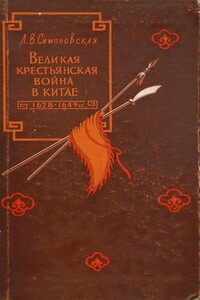
Очерк истории крестьянской войны XVII в. в Китае. В книге рассказывается о Китае в конце правления династии Мин, причинах развития повстанческих движений, ходе и итогах восстания.
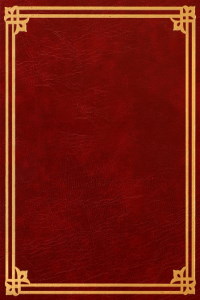
В книге рассказывается история главного героя, который сталкивается с различными проблемами и препятствиями на протяжении всего своего путешествия. По пути он встречает множество второстепенных персонажей, которые играют важные роли в истории. Благодаря опыту главного героя книга исследует такие темы, как любовь, потеря, надежда и стойкость. По мере того, как главный герой преодолевает свои трудности, он усваивает ценные уроки жизни и растет как личность.
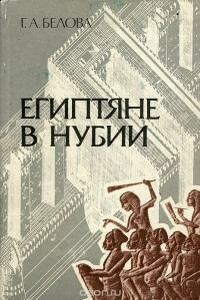
В монографии исследуется один из вопросов взаимоотношений древнего Египта с Нубией, а именно вопрос становления аппарата египетской военной и гражданской администрации на этой территории. Прослеживаются три этапа, связанные с изменениями характера политики Египта в этом регионе, которые в конечном счете привели к превращению Нубии в египетскую провинцию. Выделена роль местного населения в системе сложившихся египетских административных институтов. Исследование охватывает период Древнего, Среднего и Нового царств.
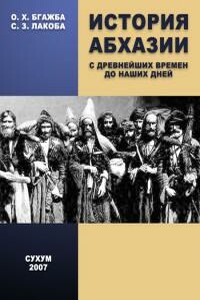
В основе книги лежит историко-культурная концепция, суть которой – рассмотрение истории абхазов, коренного населения Абхазии не изолированно, а в тесном взаимодействии с другими соседними народами и древними цивилизациями. Здесь всегда хорошо прослеживалось биение пульса мировой политики, а сама страна не раз становилась ареной военных действий и политико-дипломатических хитросплетений между великими державами древности и средневековья, нового и новейшего времени. За последние годы были выявлены новые археологические материалы, архивные документы, письменные источники, позволившие объективнее рассмотреть многие исторические события.
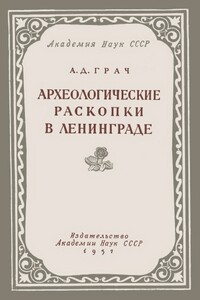
Книга, написанная археологом А. Д. Грачем, рассказывает о том, что лежит в земле, по которой ходят ленинградцы, о вещественных памятниках жизни населения нашего города в первые десятилетия его существования. Книги об этом никогда еще не было напечатано. Твердо установилось представление, что археологические раскопки выявляют памятники седой старины. А оказывается и за два с половиной столетия под проспектами и улицами, по которым бегут автобусы и трамваи, под дворами и скверами, где играют дети, накопились ценные археологические материалы.
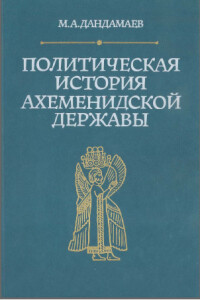
Очередной труд известного советского историка содержит цельную картину политической истории Ахеменидской державы, возникшей в VI в. до н. э. и существовавшей более двух столетий. В этой первой в истории мировой державе возникли важные для развития общества социально-экономические и политические институты, культурные традиции.
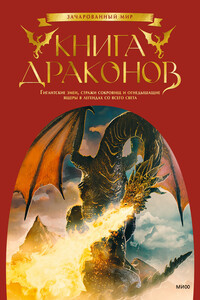
Эта книга — фундаментальное иллюстрированное исследование о происхождении и роли драконов в мировой культуре, охватывающее тысячелетия человеческой истории и множество стран и культур: от Античности до книг Толкина и Джорджа Мартина.
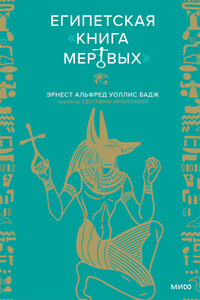
«Книгой мертвых» в Древнем Египте называли свиток с религиозными текстами, который помещали в гробницу, чтобы умерший мог достигнуть благодатных Полей Иалу. Эта книга содержит перевод самого известного образца «Книги мертвых» — легендарного папируса Ани.
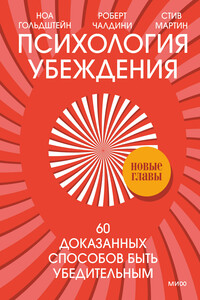
Обновленное и дополненное издание мирового бестселлера «Психология убеждения», где раскрываются приемы, помогающие эффективно общаться и этично выстраивать отношения с окружающими. Почему наши просьбы и призывы нередко остаются неуслышанными? Есть ли способ пробиться сквозь стену непонимания? Конечно. На помощь приходит наука. Авторы книги предлагают 60 научно подтвержденных психологических методик, которые помогут и в деловом, и в личном общении. Вы узнаете: – как влиять на людей, – как не попадаться на уловки и манипуляции, – почему ваши сообщения игнорируют и как это исправить, – как обратить на пользу даже свои ошибки и недостатки, – как вариант «ничего не делать» усиливает ваше влияние, – как простой вопрос обеспечит поддержку вам и вашим идеям. От авторов Вместо того чтобы полагаться на поп-психологию или неоднозначный личный опыт, мы обсудим психологическую основу успешных стратегий социального влияния, используя строго научные доказательства.
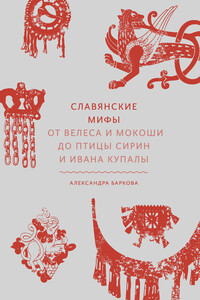
Долгожданное продолжении серии «Мифы от и до», посвященное славянской мифологии. Древние славяне, в отличие от греков, египтян, кельтов и многих других народов, не оставили после себя мифологического эпоса. В результате мы не так уж много доподлинно знаем об их мифологии, и пробелы в знаниях стремительно заполняются домыслами и заблуждениями. Автор этой книги Александра Баркова рассказывает, что нам в действительности известно о славянском язычестве, развеивает популярные мифы и показывает, насколько интересными и удивительными были представления наших предков об окружающем мире, жизни и смерти. Книга содержит около 100 иллюстраций.